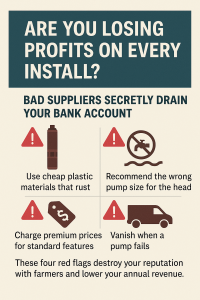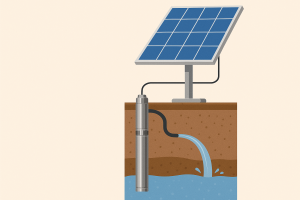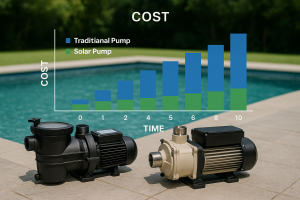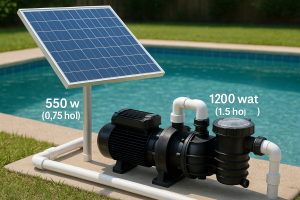Finding the right surface pump for your customers is tough. The wrong choice means wasted money and unhappy farmers. I'll explain the types so you can pick the perfect one.
A solar surface pump moves water from a source on or near the ground, like a river, pond, or shallow well. The main types are high-head/low-flow for pushing water far, and high-flow/low-head for moving large volumes. Our HYBSUN SCPM series is a popular, versatile option.
Choosing the right pump involves more than just reading a spec sheet. It's about understanding the land, the water source, and the farmer's goals. Let's break down exactly what these pumps are and how they work, so you can make the best choice for your business and your customers.
So, What Exactly Is a Solar Surface Pump?
| Are you confused about what makes a surface pump different from a submersible one? This confusion can lead to incorrect orders and installation problems. It's simple: surface pumps sit on the ground. A solar surface pump is a water pump that operates on power from solar panels. Unlike submersible pumps that go underwater, it sits on dry land. It pulls water from a nearby source like a river, pond, or shallow well through an intake pipe. ! A solar surface pump system has three main parts. First, the solar panels collect sunlight and turn it into DC electricity. Second, the controller, which usually has MPPT technology, manages this power. It makes sure the motor gets the right amount of electricity, even when the sun is not perfect. Third, the pump unit itself, which has a motor and the pump body. Our pumps use advanced brushless DC motors. They are very efficient and require almost no maintenance because they don't have parts that wear out easily. This is a big deal for farmers in remote areas. Here is a simple comparison: |
Feature | Solar Surface Pump | Solar Submersible Pump |
|---|---|---|---|
| Location | On dry land, near the water | Underwater, inside the well | |
| Best For | Rivers, ponds, shallow wells | Deep wells, boreholes | |
| Suction Lift | Limited (usually < 8 meters) | Not applicable | |
| Installation | Easier, more accessible | More complex, requires lifting |
Is a Solar Water Pump Really Worth the Investment?
| The upfront cost of solar pumps can seem high. You worry if the long-term savings are real or just a sales pitch. Let's look at the numbers. The return on investment is faster than you think. Yes, a solar water pump is absolutely worth it, especially in places like South Africa with plenty of sun and expensive or unreliable electricity. The initial cost is quickly offset by having zero fuel costs, very low maintenance needs, and a long operational lifespan. This makes it a highly profitable investment. 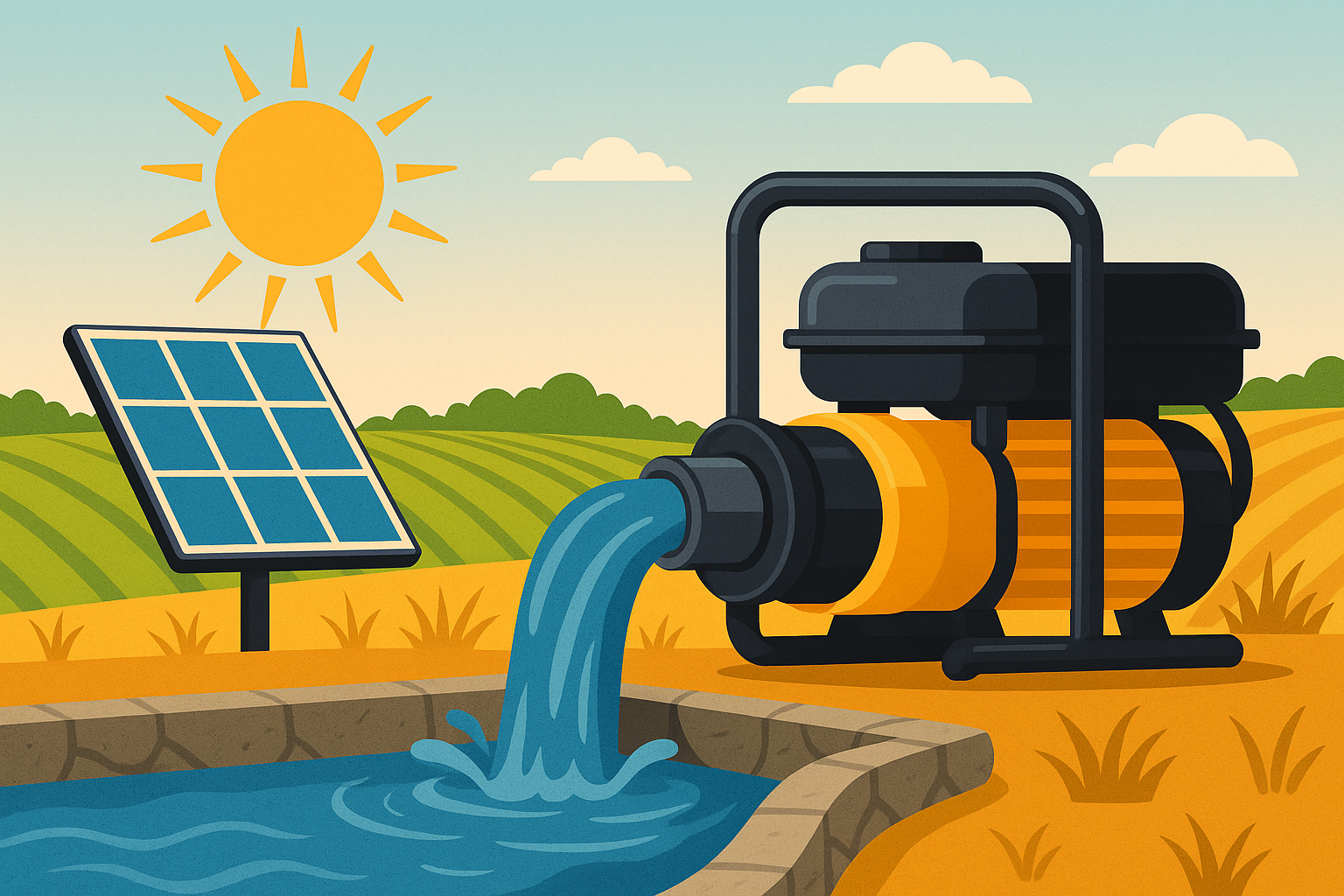 For a distributor, the return on investment is a key selling point. Your customers will save money every single day. Diesel pumps need constant fuel and maintenance. Grid-powered pumps have monthly electricity bills. Solar pumps run for free once installed. I remember a customer in Uganda who replaced his diesel pump with one of our solar systems. He told me he saved enough money on fuel in just over a year to cover the entire cost of the solar pump. Our pumps are built with stainless steel to resist corrosion and handle the high temperatures in Africa. We also offer a 3-year warranty, which gives you and your customers peace of mind. This focus on durability means fewer problems for you and a reliable water supply for the farmer. |
Cost Factor | Diesel Pump (5-Year Est.) | HYBSUN Solar Pump (5-Year Est.) |
|---|---|---|---|
| Initial Cost | Lower | Higher | |
| Fuel/Energy | Very High | $0 | |
| Maintenance | High (filters, oil, parts) | Very Low (minimal moving parts) | |
| Total Cost | Much Higher | Lower |
What Is the Main Purpose of a Surface Pump?
Knowing when to choose a surface pump over another type can be tricky. Recommending the wrong pump damages your reputation and costs your customer money. Here’s the simple rule: use surface pumps for shallow water sources.
The main purpose of a surface pump is to move water from a source that is on or near the ground. This includes rivers, ponds, streams, and shallow wells where the water level is not more than 8 meters deep. It's ideal for applications where you don't need to lift water from great depths.

The real purpose depends on the specific job. That’s why we have different models. Think about two main jobs: moving water far, or moving a lot of water. For moving water far or uphill, you need a high-head, low-flow pump. This is perfect for drip irrigation systems that need pressure to work correctly over a large area. For moving a lot of water over a short, flat distance, you need a high-flow, low-head pump. This is great for flood irrigation or quickly filling a large water tank for livestock. Our HYBSUN SCPM series is designed to cover both needs. As a distributor, having access to both types from one factory makes your job easier. You can confidently provide the right solution for any farm, whether it's a small vegetable plot or a large commercial operation.
How Far Can a Solar Surface Pump Really Push Water?
| Customers always ask about distance and height. Giving a wrong estimate leads to a system that just doesn't work. I'll explain the two key factors: head and flow rate. How far a solar pump pushes water depends on its "total dynamic head" and its flow rate. Some models are built for high pressure (high head) and can push water hundreds of meters horizontally or vertically. Others are for high volume (high flow) over shorter distances. 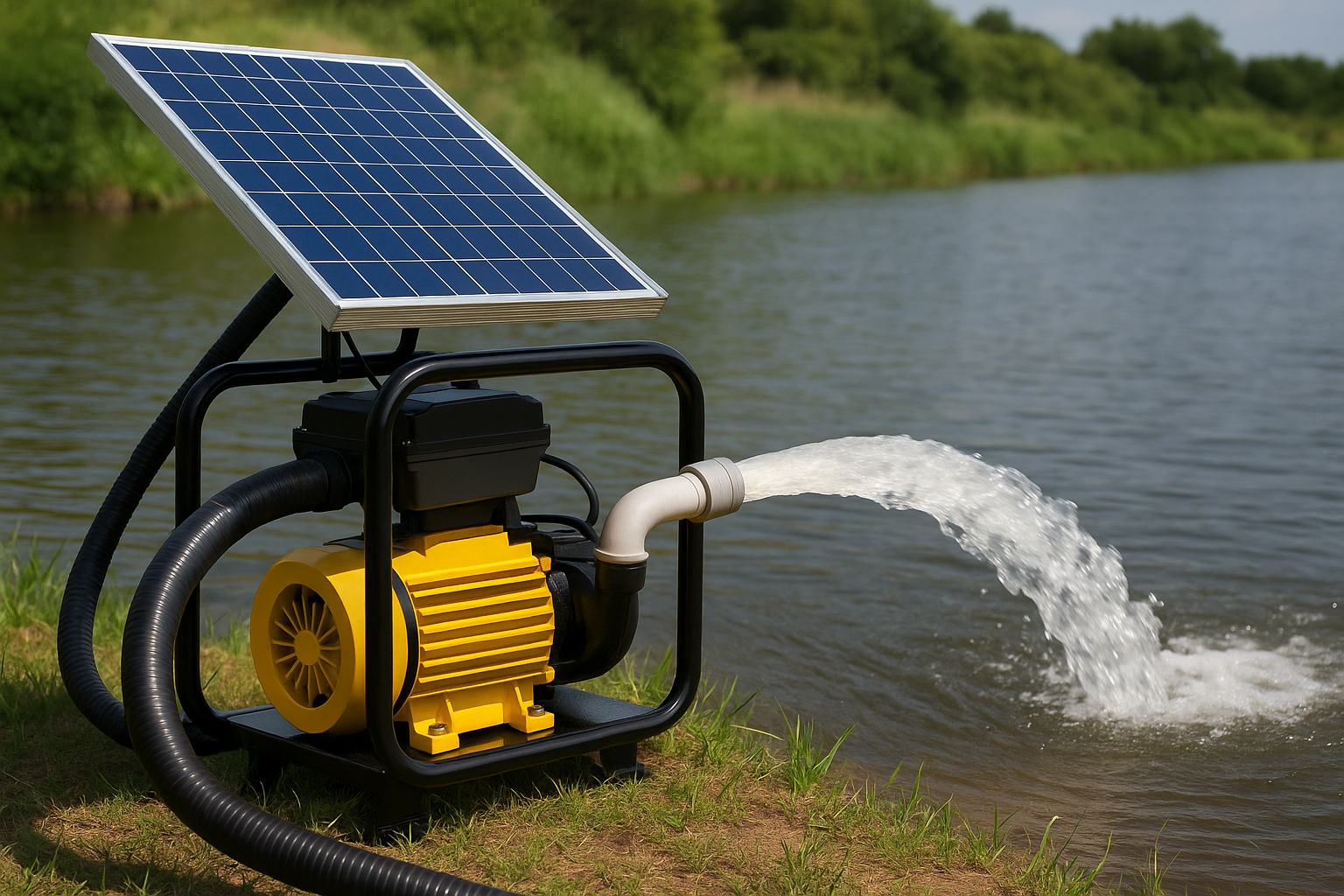 Let me simplify 'Total Dynamic Head'. It is the total work the pump has to do. It includes the vertical distance you are lifting the water (static head) plus the friction loss from the water moving through the pipes. A longer or narrower pipe creates more friction. As a factory, we provide performance curves for every pump. This chart shows you exactly how much water (flow rate) the pump can deliver at a certain total head. For example, a farmer in Zambia might need to pump water from a river to a tank 20 meters high and 300 meters away. We use a formula to calculate the head and then check the curve to find the perfect pump. This scientific approach removes all guesswork. You can show this data to your customer and prove that the pump you are selling will do the job. This builds incredible trust and makes you look like an expert. |
Total Head (Meters) | Flow Rate (Cubic Meters/Hour) |
|---|---|---|
| 10 | 12.5 | |
| 20 | 10.0 | |
| 30 | 7.5 | |
| 40 | 4.0 |
Conclusion
Choosing the right solar surface pump is about matching head and flow to the job. We at HYBSUN provide the durable, efficient pumps and support you need to succeed.
